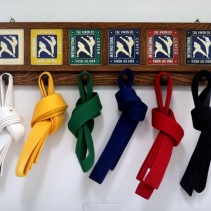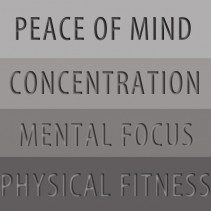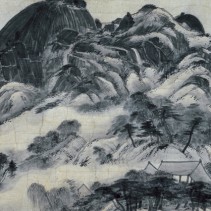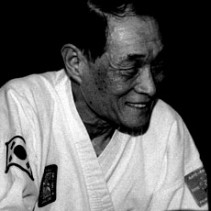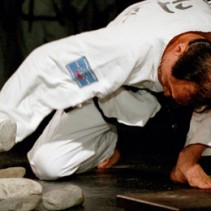Belt Colors
The concept of belts and rank is probably one that most people associate with Taekwon-Do and martial arts in general.
Our belts reflect a member’s proven level of competence and (just as importantly) the progression of colors reflects an inner journey that never truly ends. Each belt achieved is truly an accomplishment worthy of respect.
It is also worth noting that achieving a belt isn’t just a matter of “spending enough time” in a previous belt. In order to achieve their next rank, a student must demonstrate their proficiency in their current belt’s techniques, to include Basic Moves, Sparring, and Forms.
INTERNATIONAL BLACKBELT CENTER TAEKWONDO BELTS (RANKS)
|
“Pure and without the knowledge of Songahm Taekwon-Do. As with the Pine Tree, the seed must now be planted and nourished to develop strong roots.”
The student has no knowledge of Taekwon-Do and begins with a clean (pure) slate.
Purity is often signified by the color white.
|
“The seed is beginning to see the sunlight.”
The student begins to understand the basics of Taekwon-Do.
The sun appears to be yellow.
|
“The pine tree is beginning to develop and grow in strength.”
The student’s technique is developing power. The components of the basic techniques are beginning to work in unison.
As the pine tree develops, it sprouts green pine needles.
|
“The tree reaches for the sky toward new heights.”
Having passed the mid-way point, the student focuses his/her energy upward toward black belt.
The sky appears as blue.
|
“The sun is setting. The first phase of growth has been accomplished.”
The first day (the period of time from white belt to red belt) of growth is coming to an end. The physical skill has been developed but lacks control; therefore, physical and mental discipline must now be achieved.
Variations of red are found among the many colors of the sunset.
|
“The tree has reached maturity and has overcome the darkness… it must now ‘plant seeds for the future.'”
The color black is created when all the colors of the light spectrum have been absorbed into an object. That object has “taken control” of the colors and retained them. If one color was to “escape”, the object would no longer be black but would appear as that color. The student has mastered the nine geup (grades) of Taekwon-Do. He/she has “absorbed” all the knowledge of the color ranks and overcome or “mastered” that level or training.
The colors of the spectrum are bound together and are not reflected off an object, resulting in the absence of color which we call black.
Frequently Asked Questions
The Answers to some Frequently Asked Questions:
What are the differences between various Martial Arts?
If I don’t know anything about Martial Arts, how can I evaluate the quality of a school?
Why not just attend a course at a community center, YMCA, or Health Club?
Why not just train with the highest degree black belt I can find?
What is Taekwon-do?
What is Traditional Taekwon-do?
What are the goals of Taekwon-do?
What does Taekwon-do offer?
Who can Study Taekwon-do?
Is Taekwon-do safe?
Will Taekwon-do make my child violent?
What are the differences between various Martial Arts?
If I don’t know anything about Martial Arts, how can I evaluate the quality of a school?
Why not just attend a course at a community center, YMCA, or Health Club?
Why not just train with the highest degree black belt I can find?
What is Taekwon-do?
Taekwon-Do is an ancient Korean martial art, a form of unarmed self-defense. Taekwon-Do is also a philosophy of self-restraint, kindness and humility. Taekwon-Do is not a competitive sport, but rather is an art, which ultimately becomes a way of life for its practitioners.
The “Do” portion of the term Taekwon-Do means “the way”, or more clearly, “the way to enlightenment, self-realization and understanding”.
What is Traditional Taekwon-do?
Traditional Taekwon-Do is the original style of Taekwon-Do. It differs from modernized forms of Taekwon-Do and other martial arts in several important ways.
- The emphasis is on each student’s own personal self-improvement rather than on competition with others.
- It is more aerobic than other styles.
- No physical contact is allowed in free sparring.
What are the goals of Taekwon-do?
What does Taekwon-do offer?
Through vigorous exercise, Traditional Taekwon-Do develops physical and mental strength and aids in relaxation. The training and exercises involve movement of the entire body, promoting good health, fitness, flexibility and a feeling of well-being. In addition to improving physical fitness and providing the stress-reducing benefits found in aerobics and many sports, Traditional Taekwon-Do also promotes:
- the development of a strong mind, enabling one to focus and concentrate in all aspects of life,
- the skill to defend oneself, leading to an overall sense of self-confidence,
- the ability to work toward and achieve personal goals,
- the opportunity for family members of disparate ages, with differing athletic abilities, to participate in the same activity.
Who Can Study Taekwon-do?
Men, women and children, young and old, can all study Traditional Taekwon-Do. Each individual works at his/her own level of intensity, appropriate for his/her fitness level. In additional to the vigorous Adult program classes, the IBBCV offers a special preconditioning program for adults who wish to begin their study of Traditional Taekwon-Do in a slower, gentler manner.
Is Taekwon-do safe?
Will Taekwon-do make my child violent?
Benefits
- Physical Fitness
Traditional Taekwon-Do training involves movement of the entire body promoting good health and fitness. Your cardiovascular health will improve along with your coordination, strength, speed, and flexibility.
- Stress Relief
Today’s stressful world affects us all. When stress builds up over time, it can cause or exacerbate many physical illnesses. Taekwon-Do is the ultimate stress reliever. You will feel relaxed and peaceful after practice.
- Self Defense
Avoidance of and retreat from dangerous situations is always preferable to engaging in physical conflict. But when these fail, self-defense skills can enable the student to avoid becoming the victim of violent crime.
- Weight Loss
Taekwon-Do is a healthy, effective and ejoyable way to lose unwanted, excess weight. As a bonus, since your body becomes more metabolically active from exercise, you will also burn from calories at rest.
- Self Confidence
Self-confidence develops as a result of mastering skills at each level. This inner strength helps in all aspects of life and enables people to maintain a positive attitude through even the most difficult situations.
- Mental Strength
Taekwon-Do trains the mind as well as the body. Mastering techniques, combinations, and complex patterns improves focus and concentration while teaching patience and perseverance
History
EARLY KOREAN HISTORY
The earliest records of Martial Arts practiced in Korea date back to about 50 B.C. These early indigenous forms of the Korean martial arts were known as Taek Kyon. Other Archeological evidence of early Martial Art practice, including two stone carvings dating from the seventh century A.D., were found in a cave in southern Korea. These carvings represent a famous warrior, Kumkang-Yuksa, apparently executing a martial arts technique. Another early Korean Martial Art was known as Soo Bakh, meaning ‘Punching and Butting’.
EARLY ASIAN HISTORY
In the sixth century A.D., a Zen Buddhist monk named Bodhidharma journeyed from India to China and established Zen Buddhism at the Shoalin Temple in Hunan Province. He had instituted such a harsh method of training his students in the Buddhist Precepts that many of his followers fell in exhaustion. So Bodhidharma began to teach these students another method of physical and spiritual exercise to enable them to free themselves from exhaustion and achieve enlightenment. The essence of this doctrine was one of humility, to shun material desire, power, greed, and vanity. Later, this training method became a defensive fighting system named Kwon Bop. It is believe that Kwon Bop was spread throughout China, Korea, Okinawa, and Japan by traveling Zen Monks, where it may have commingled with local indigenous forms of the martial arts.
ORIGINS OF MODERN TAEKWON-DO
Japan occupied and dominated Korea from about 1910 until the end of the Second World War. During this time, the Japanese tried to erase all traces of the Korean culture including the Korean martial arts. The practice of martial arts in Korea did continue during this period, but had to be done in secret. As a boy in Korea, Choi, Hong Hi began his martial arts training to improve his rather frail condition. He was encouraged to learn Taek Kyon at the age of fifteen by his Calligraphy Master. Then, in 1938, he traveled to Japan to attend Tokyo University. Training in martial arts was permitted for Koreans living in Japan and while in Tokyo, Choi obtained his Black Belt (2nd Dan) in Shotokan Karate. On return from Japan he was imprisoned for a time in a Japanese Army jail because of his involvement in a Korean national liberation movement. Later he rose to the Rank of General in the Korean Army. That is how he became commonly known as “General Choi”.
After World War II, Korea became independent and several martial arts schools, called Kwans, arose. These were: Oh Do Kwan (founded by General Choi), Yun Moo Kwan, Chung Do Kwan, Moo Duk Kwan, Chang Moo Kwan, Ji Do Kwan, Chi Do Kwan, and Song Moo Kwan. The Kwans united in 1955 as Tae Soo Do. Then in 1957, General Choi proposed the name Taekwon-Do, because of its similarity to the name Taek Kwon. Some of the other Masters joined their schools in a new structure called the Korean Taekwon-Do Association with General Choi as President. Hence, today, General Choi is known as the Father of modern day Taekwon-Do.
TRADITIONAL TAEKWON-DO
The current form of Traditional Taekwon-Do was systematized by General Choi in the mid 1950′s . It was a natural progression from Taek Kyon and General Choi’s training in Karate. During this time, a special demonstration team of masters, led by General Choi, performed spectacular demonstrations throughout the world. These demonstrations introduced more and more people to the martial art known as Taekwon-Do. Master Kwon, Jae-Hwa was one of this elite group of masters selected to be a part of the goodwill mission. His team was assigned to bring Taekwon-Do to Europe, the Middle East, and North Africa. After the tour, Master Kwon remained in Germany and became the chief instructor of the German Taekwon-Do Association. He is known as the founder of European and Middle Eastern Taekwon-Do.
Grandmaster Kwon
There have only been three truly great Martial Art Masters during the twentieth century. They are: Master Kenzo Awa (Archery), Master Gishin Funakoshi, (Karate) and Master Kwon, Jae-Hwa (Taekwon-Do).
Master Awa (1880-1939) was first and foremost a Zen Master who was also a Master of Archery. Probably the best Martial Art book ever written is “Zen In The Art Of Archery”, by Eugene Herrigel. In this book Herrigel describes his own experiences in training with Master Awa. Two of Master Awa’s teachings were, ‘One life, one shot. Spend your whole lifetime shooting one arrow’, and ‘The natural expression of oneself must be accomplished by the unity of Truth, Goodness and Beauty’.
Master Funakoshi (1868-1957) was a Master teacher who taught in his Dojo until the end of his life. He introduced Shotokan Karate into Japan from Okinawa. (It was in Shotokan Karate that Master Choi, Hong Hi received his karate training while living in Japan). Master Funakoshi taught: ‘Train with both heart and soul’, and ‘True practice is done not with words but with the entire body’.
Master Kwon, Hwa-Jae (born 1937) is a Master teacher who has devoted his whole life to the Art and Practice of Taekwon-Do. Unlike many other martial art masters in modern times who have long since retired, Master Kwon continues, at age 65, to teach his multitude of students, every day. He is also the link between the Masters of old and modern times. He is the last of the great martial art masters.
Master Kwon was born in Pusan Korea in 1937. His mother was widowed early in life. He was a frail child so, at age twelve, his mother encouraged him to become stronger in both mind and body by studying under the tutelage of Ha Dae-Yong. He completed his Taekwon-Do training under General Choi, Hong Hi. During his early years, Master Kwon was employed as a reporter for the Pusan Daily News. He put himself through college, receiving a B.A. in Economics. His philosophy of Taekwon-Do is explained in his book, Zen and the Art of Self-Defense, originally published in 1971 by Otto Wilhelm Barth Verlag.
Because of Master Kwon’ superior abilities and intangible qualities, he was chosen by General Choi, in 1965, to be one of the members of the demonstration team of master instructors to introduce Taekwon-Do to Europe, Asia, and the Middle East. After the mission was complete, Master Kwon remained in Germany where he single-handedly built an International Federation of Traditional Taekwon-Do Schools.
Today, Master Kwon has many independent schools in Germany alone, as well as many other schools in Cyprus, Greece, America and Korea. In addition, he has thousands of Black Belts worldwide, all of whom he has personally tested for promotion to black belt. In this manner, he insures that all federation schools meet his high standard of quality and that all students practice his philosophy. A significant part of his philosophy includes the practice of humility. Master Kwon teaches that, “hard work is the foundation of Taekwon-Do and of life. But hard work alone will not accomplish everything; and alone, it will not earn the respect of your students. It must be accompanied by humility. Humility is the willingness to help those who need it, and the modesty to not flaunt our own abilities. Humility breeds respect. We must always remember this”.
Master Kwon’s world headquarters is located in New your City. He is featured in the publication of New York’s 50 Best (to keep your Spirit Alive) where they say: “… His remarkable strength and youthfulness make the fact of his age seem impossible. With bare hands he can break a rock in two! Humility keeps him from revealing too much about himself, yet people make the pilgrimage from around the world to study with this Master.
Master Kwon says, ‘When you come into class from the busyness of your life, you forget everything. There no time for distraction, no choice but to concentrate so you can catch the constantly changing movements.’ But if the practice stays on a purely physical or mental level, it will not transform you. Taekwon-Do is a lifestyle. Honesty, respect, and self-control mark a truly disciplined martial artist.
Master Kwon is a living model of these truths. His humility inspires.
“Instead of growing old in your striving, you can follow the way of the Master… and get younger and younger.”
Affiliates

Master R. Luciano
Taekwon-Do Center
3028 East Tremont Avenue
Bronx, NY 10461
Davie & Tamarac, Florida
| Phone | 954-797-8113 & 954-701-9316 |
| Traditionaltaekwon@comcast.net | |
| Website | http://geturblackbelt.com/ |
International Taekwon-Do Center E. T. B. S.

Hamburger Straße 150, 22926
Ahrensburg (bei Hamburg)
Email: B.Schunk@Taekwon-Do.net


